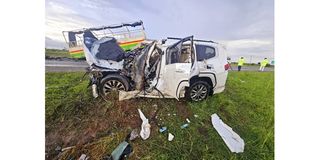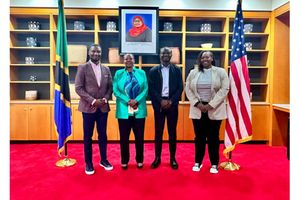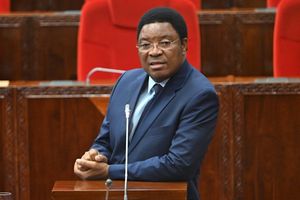Do More to Make Night Travel Safe in Tanzania

What you need to know:
- The crash, which occurred in Bunda District, Mara Region, has once again drawn national attention to the vulnerabilities that plague our roads when darkness falls.
The death of Tanzania Electric Supply Company (Tanesco) managing director Gissima Nyamo-Hanga in a tragic road accident early yesterday is a painful reminder of the persistent risks associated with night-time travel.
The crash, which occurred in Bunda District, Mara Region, has once again drawn national attention to the vulnerabilities that plague our roads when darkness falls.
According to police accounts, the vehicle ferrying Nyamo-Hanga was involved in a collision after its driver attempted to avoid a cyclist, lost control and rammed into an oncoming lorry.
The accident took place between midnight and 1:00 am, at a time when the roads are often quiet, yet perilous.
The circumstances surrounding this incident are not uncommon. Across the country, countless road users travel during the night, often under conditions far from ideal.
Fatigue, poor lighting, reduced visibility, reckless overtaking and unregulated movements by both motorists and non-motorists combine to make night-time travel disproportionately hazardous.
The loss of such a senior public servant should not only be mourned—it should also prompt introspection and action. Road accidents remain a major public safety concern in Tanzania and night-time presents additional challenges that require urgent and sustained interventions.
While it is impossible to eliminate all risk, it is both possible and necessary to minimise it.
Authorities must revisit and strengthen existing road safety strategies with a focus on improving conditions for night travel. This means ensuring roads are well-marked, properly lit and free from obstacles that are hard to detect in the dark.
Rudimentary infrastructure
Road signage must be visible, road shoulders cleared and pedestrian crossings made distinct, particularly in rural and semi-urban areas where the infrastructure is often rudimentary. Law enforcement agencies must also heighten night-time patrols and enforce existing traffic regulations consistently.
Speed limits, driver fatigue and vehicle conditions should not be left unchecked simply because travel is taking place after dark.
Transport operators, both public and private, must be held to high safety standards, including ensuring that drivers are adequately rested before undertaking long journeys.
Furthermore, public education remains essential. Pedestrians and cyclists—many of whom use the roads at night—should be sensitised on how to make themselves more visible, while motorists must be reminded of their responsibility to drive cautiously and courteously.
The death of Mr Nyamo-Hanga is not merely a loss to his family and his institution; it is a national tragedy that underlines a broader issue we have not yet resolved.
It is incumbent upon all responsible authorities to ensure that these roads do not become avenues of grief and loss.
The call is simple and urgent: do more to make night travel safe. Let this incident be the final alarm that compels policy shifts, infrastructural improvements and behavioural change.
We owe it not only to the memory of those who have perished, but also to the millions who continue to travel under the cover of night—hoping, each time, to arrive safely.




